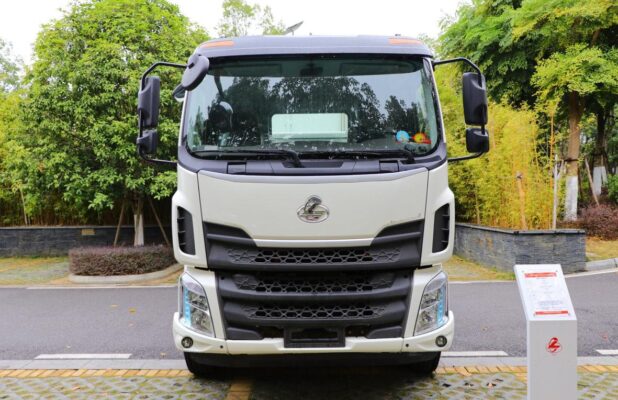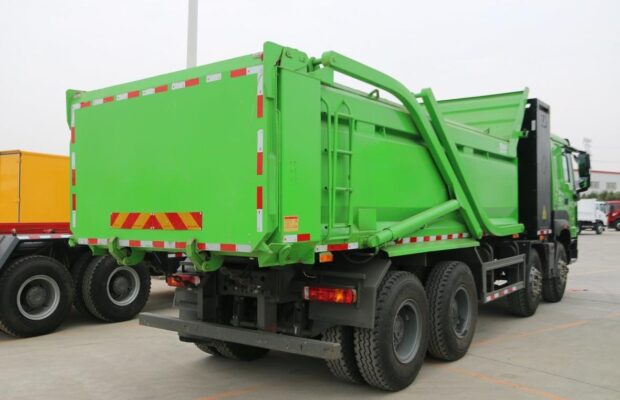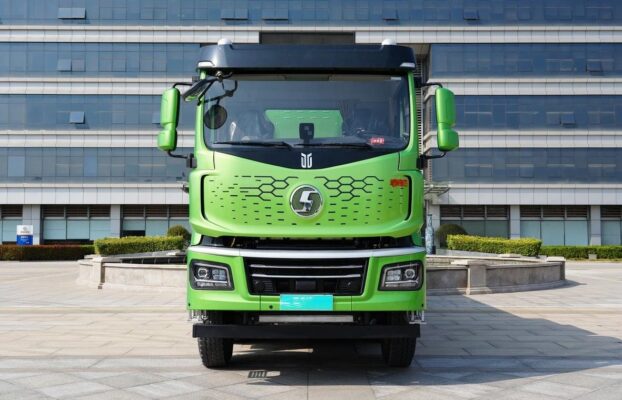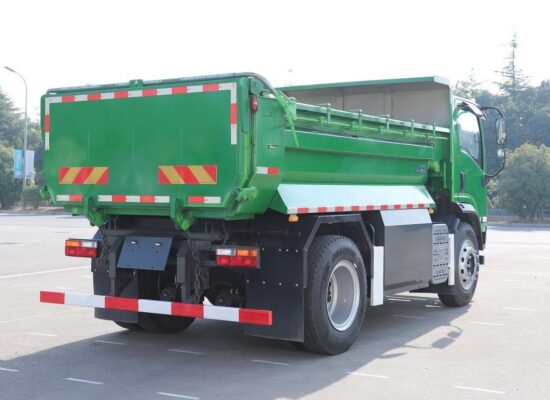أخبار الشاحنات الكهربائية
Why Does All-Wheel Drive Reduce the Range of Electric Vehicles?
The reduction in range when using all-wheel drive (AWD) in مركبة كهربائيةق (المركبات الكهربائية) can be attributed to several factors related to system design, weight, energy consumption, and mechanical efficiency. While AWD systems offer improved traction, handling, and performance, these advantages come at the cost of increased energy requirements. Below, we delve into the reasons why AWD reduces the range of EVs and the engineering trade-offs involved.
1. Increased Vehicle Weight
1.1 Additional Components
AWD systems require extra components, such as:
- Additional Electric Motors: Most AWD EVs utilize an electric motor for each axle. This adds to the overall vehicle weight.
- Drivetrain Components: Items like transfer cases, driveshafts, and differentials contribute to additional weight in mechanical AWD systems.
1.2 Impact of Weight on Energy Consumption
- Energy Requirements: Heavier vehicles require more energy to accelerate and maintain speed, directly impacting the range.
- Inefficiencies in Stop-and-Go Traffic: In urban environments, the increased mass leads to higher energy consumption during frequent starts and stops.
2. Higher Mechanical and Energy Losses
2.1 Mechanical Losses in the Drivetrain
AWD systems often introduce additional friction and energy losses:
- Friction in Transmission Components: Gearboxes, differentials, and driveshafts create resistance, which consumes energy even during steady-state driving.
- Heat Dissipation: Energy lost as heat in mechanical components reduces overall system efficiency.
2.2 Electrical Energy Distribution
In EVs with dual-motor setups:
- Energy Splitting: Power must be distributed between the front and rear motors, which requires additional energy for coordination.
- Uneven Efficiency: Electric motors are most efficient within a specific operating range. Operating multiple motors simultaneously can sometimes push them outside their optimal efficiency zones.
3. Increased Power Demand for AWD Systems
3.1 Constant Power Distribution
Many AWD EVs employ full-time AWD systems where all wheels receive power simultaneously:
- Continuous Energy Draw: Unlike on-demand AWD systems, full-time AWD consistently consumes more energy, even when maximum traction isn’t required.
- Higher Baseline Power Needs: Maintaining power to multiple wheels increases the baseline energy consumption during driving.
3.2 Enhanced Performance Capabilities
AWD systems often provide superior acceleration and handling by utilizing high-power electric motors:
- Increased Power Output: The use of powerful motors to achieve higher performance results in greater energy consumption.
- Dynamic Power Management: Advanced AWD systems dynamically adjust torque distribution, which can momentarily spike energy demand.
4. Impact of Terrain and Driving Conditions
4.1 Off-Road or Adverse Conditions
AWD is particularly advantageous in challenging environments:
- Rough Terrain: Driving on snow, mud, or gravel requires more energy to overcome resistance and maintain traction.
- Inclined Surfaces: AWD systems often perform better on slopes, but climbing inclines requires significant energy input.
4.2 Overcoming Air Resistance at High Speeds
In highway driving:
- Increased Aerodynamic Drag: Higher speeds amplify the impact of air resistance, further exacerbating energy loss when coupled with AWD’s increased power requirements.
5. Energy Management and Thermal Considerations
5.1 Battery Discharge Rates
Operating an AWD system typically accelerates the rate at which the battery discharges:
- Increased Current Demand: Powering multiple motors simultaneously requires higher current, which depletes the battery more quickly.
- Voltage Drops: Rapid energy consumption can temporarily lower battery voltage, reducing efficiency.
5.2 Heat Generation in AWD Systems
AWD configurations often generate more heat due to:
- Motor Operation: Running multiple motors can increase heat generation, requiring energy to power cooling systems.
- Battery Thermal Management: Excessive heat from drivetrain components can necessitate active thermal management, further draining the battery.
6. Design Trade-Offs and Efficiency Challenges
6.1 Vehicle Architecture
The architecture of AWD EVs often prioritizes performance and safety over range:
- Low Rolling Resistance Tires: While designed for efficiency, these may not fully offset the additional energy needs of AWD systems.
- Aerodynamic Design: AWD systems often require modifications to the vehicle’s undercarriage, potentially increasing drag.
6.2 Software and Optimization
Manufacturers use software to mitigate energy losses, but limitations remain:
- Torque Vectoring: Advanced AWD systems that use torque vectoring for better handling may consume additional energy during rapid adjustments.
- On-Demand AWD Modes: While some EVs allow drivers to switch to two-wheel drive for efficiency, many consumers prefer full-time AWD for convenience, leading to reduced range.
7. Consumer Expectations and Market Trends
7.1 Preference for Performance
Consumers often choose AWD EVs for their superior performance:
- Acceleration and Handling: AWD provides improved traction and stability, especially in high-performance models.
- All-Weather Capability: Buyers in regions with severe winters or rugged terrain prioritize AWD, valuing safety over range.
7.2 Trade-Off Awareness
As EV technology evolves:
- Increased Range Models: Manufacturers are developing larger battery packs and more efficient AWD systems to address range concerns.
- Consumer Education: Many consumers understand that AWD’s benefits come at the cost of reduced range and accept this trade-off.
8. Efforts to Improve AWD Efficiency in EVs
8.1 Lightweight Materials
Using advanced lightweight materials in body and drivetrain components helps reduce the additional weight associated with AWD systems.
8.2 Smarter Power Distribution
Modern AWD systems are increasingly efficient:
- Predictive Energy Use: Systems that engage AWD only when needed help conserve energy.
- Improved Motor Efficiency: Advances in motor design and control algorithms optimize performance and minimize losses.
8.3 Battery Technology Innovations
Ongoing improvements in battery technology are helping to offset the range reduction caused by AWD:
- Higher Energy Density: Batteries that store more energy can compensate for the increased consumption of AWD systems.
- Faster Charging: Reducing downtime for recharging mitigates the practical impact of reduced range.
خاتمة
The reduced range of AWD مركبة كهربائيةs is primarily due to added weight, mechanical and energy inefficiencies, and the increased power demands of driving all four wheels. While these factors present challenges, manufacturers are addressing them through advanced engineering, improved software, and the development of more efficient batteries. Despite the range trade-offs, AWD EVs remain popular for their performance, أمان, and versatility, making them a compelling choice for many drivers. As technology continues to evolve, we can expect future AWD EVs to strike an even better balance between efficiency and capability.




